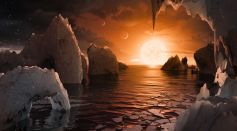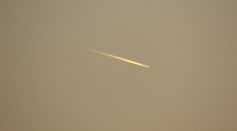SPACE

Discovery of Dwarf Planet Eris 17 Years Ago Reignites Debate On Reinstating Pluto In the Solar System

Giant Chunk of Russia's Satellite Angara A5 Space Junk Crashes To French Polynesia

Constellation Orion on Fire! New Image Shows Bright Flame Nebula [LOOK]

Failed Russian Satellite Angara A5 Could Make An Uncontrolled Re-Entry This Week; Should We Worry?

NASA Finally Unfolds James Webb Space Telescope Giant Sunshield in Space

Super-Earth Rocky Planet TOI-270 B: What Makes It Unique Compared to Others in Our Solar System?

Small Russian Military Satellite Fragments Could Crash Down Earth This Week After Persei Booster Malfunctions on Low Orbit

Perihelion Day 2022: Earth Makes Closest Yearly Approach to the Sun

Cats, Other Animals Seen Staying On Elon Musk's Starlink Dishes; What Are They Doing There?

Meteor Explosion Caught in Camera: NASA Confirms Event Was Equal to 30 Tons of TNT

NASA James Webb Space Telescope Shares Stunning Photos After Moving On From Post-Launch Setup
Terraforming Mars Into a Habitable Planet is Possible, Says Former NASA Chief Scientist

Humans on Mars: SpaceX CEO Elon Musk Says People Will Reach the Red Planet in 5 to 10 Years

NASA Says There Are 5 More Asteroids Heading Towards Earth This Month
Most Popular

How the STEVE Phenomenon Creates a Strange Purple Aurora That Atmospheric Science Still Can't Fully Explain

How the 8 Smartest Animals Show Extraordinary Animal Intelligence and Cognitive Abilities

Could a Twin Sun or Solar Sibling Be Hiding Among Nearby Stars in Our Galaxy?

Surprising Climate Change Effects and Global Warming Signs Changing Your Daily Life Now





